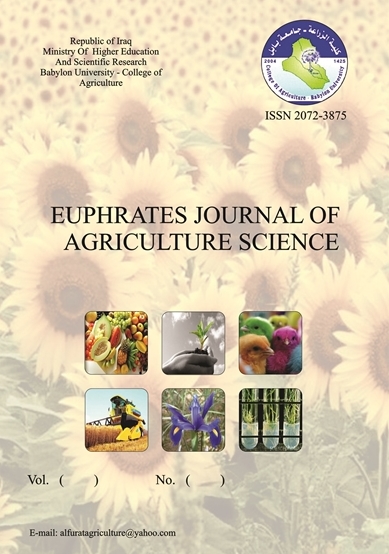Abstract
A field experiment was carried out during the season 2019/2020 in Mosul/Tilkif. It included six introduced genotypes of durum wheat originating from International Center for Agriculture Research Dry areas (ICARDA) (Nano, Uramy, Miki3, Ouhassan and Atlhagy) and local variety Svivo for control. Six durum wheat genotypes were grown by using R.C.B.D. design with three replications. The results indicated that the means of the genotypes squares were significant at a 1% probability level for the traits of the flag leaf area, plant height, spike length, number of grains per spike, biological yield, grain yield, harvest index, and 1000 grains weight. Genetic and phenotypic variation were significant for all the studied traits, except for the traits of the number of days until the beginning of flowering, number of tillers .m-2, and protein percentage, for phenotypic variation were not significant. Grain yield had positively significant phenotypic correlation at a 1% probability level with traits: flag leaf area, spike length, number of grains per spike, biological yield and harvest index and protein percentage. Whereas, grain yield showed a positive significant environmental correlation by 5% probability level with the biological yield and weight of 1000 grains traits. However, the values of heritability of broad sense were high for all the studied traits, except for the traits of the number of days until the beginning of flowering and protein percentage was medium, while, heritability of the number of tillers .m-2 was low.
